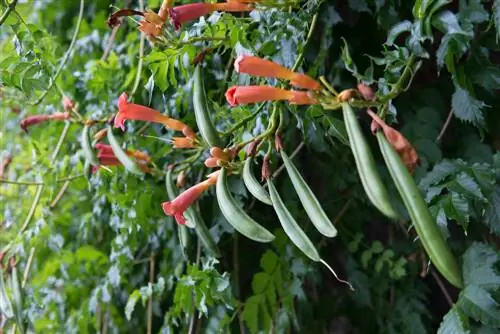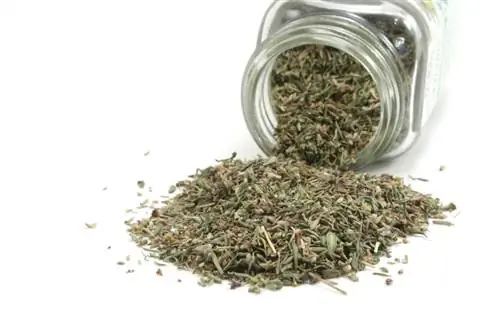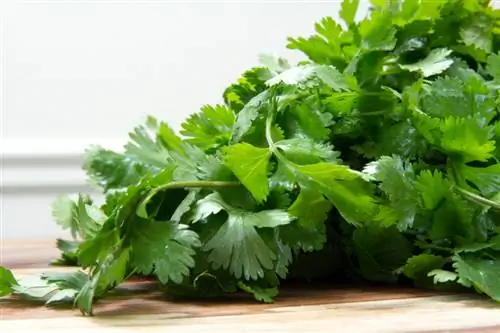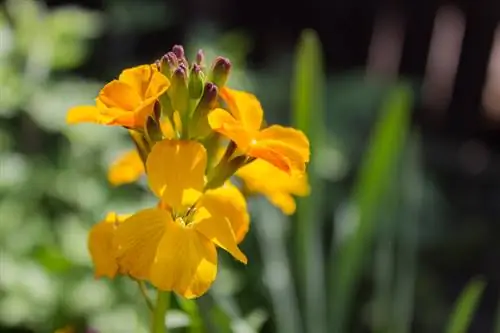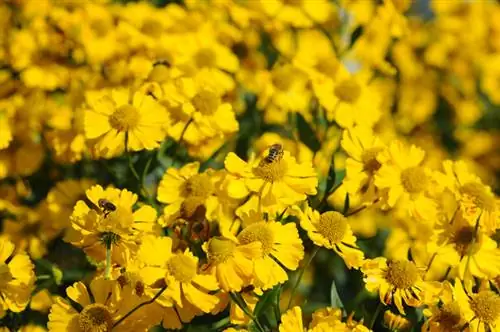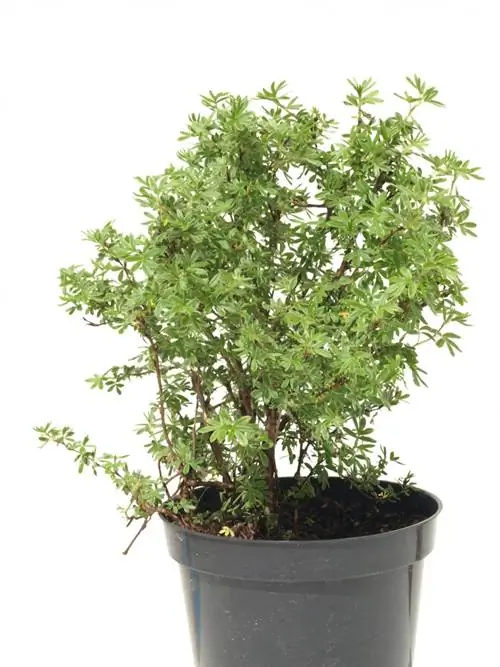- Author admin [email protected].
- Public 2023-12-16 16:46.
- Last modified 2025-01-23 11:22.
Anyone who assumes that the trumpet flower is difficult to propagate at home is seriously mistaken. A new plant can develop from almost every part of the plant, from the root to the seed. Sometimes the plant does it alone, sometimes you have to take action.
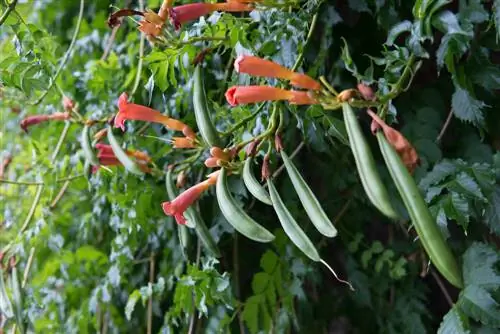
The five methods at a glance
- Sowing seeds
- Cuttings
- Root cuttings
- foothills
- Lowers
Sowing seeds
Let the seed capsules on the trumpet flower ripen and then leave them to nature. If you later discover a young plant close to the mother plant, you can dig it up and transplant it. Self-sowing is so successful that most owners try to prevent it by removing the spent flowers.
If the dry seed capsules burst, you can also collect the seeds and sow them indoors.
- Sowing is possible all year round
- Soak seeds for six hours
- then place on moist substrate
- do not cover with soil
- Keep substrate moist at all times
- the germination time takes about 4 weeks
Cuttings
- Cut semi-ripe cuttings 20 cm long in July or August.
- Fill small pots with potting soil.
- Insert the cuttings and water them.
- Put a transparent plastic bag over each (ventilate regularly)
- Place the pots in a warm and bright place.
- As soon as a cutting has formed sufficient roots, it will visibly sprout new leaves. It can now be transplanted.
Tip
A young trumpet flower is not yet sufficiently hardy. When overwintering outdoors, you should cover the root area with a thick layer of leaves and wrap the above-ground plant parts with jute or protect pine branches.
Root cuttings
This method is more complex than the others. These are the individual steps:
- expose part of the root area in autumn
- separate finger-thick parts of the root
- Mark the bottom end (so that the planting takes place in the correct direction)
- store frost-free in moist coconut fiber
- cut into 5-10 cm long pieces and plant in winter
- use a coconut fiber-sand mixture
- Cover root pieces 2 cm with substrate
- Make it bright as soon as shoots appear
Tip
The trumpet flower plant sap is poisonous and can cause allergic skin reactions. Therefore, wear protective gloves when cutting.
foothills
If runners have formed, separate them from the mother plant and dig them up. They will be planted immediately afterwards in their future location.
Lowers
A previous year's shoot of the climbing plant is bent down to the ground and covered with soil, with the tip still showing out. If necessary, the shoot is fixed with wire or stones. The soil is then kept moist throughout. If the sinker sprouts again, this is confirmation of successful rooting. The new plant is separated from the mother plant and transplanted.

